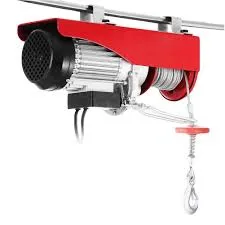


Understanding Pallet Truck Operation A Comprehensive Guide
Pallet trucks, also known as pallet jacks, are essential tools in warehouses, factories, and retail environments, helping to move heavy loads of goods with ease and efficiency. While their construction may seem straightforward, mastering their operation is crucial for ensuring safety and productivity in any workplace. Here, we will explore the key aspects of pallet truck operation, emphasizing safety, efficiency, and best practices.
1. Types of Pallet Trucks
Pallet trucks come in various types, including manual and electric models. Manual pallet trucks are operated by hand, requiring the user to pump a lever to lift the pallet off the ground. They are ideal for light to moderate loads and are often used in smaller spaces. Electric pallet trucks, on the other hand, use a battery-powered motor to lift and move heavier loads with minimal physical effort. Understanding the type of pallet truck you are using is crucial, as it influences how you should handle it.
2. Safety Precautions
Safety should always be the foremost consideration when operating a pallet truck. Here are some key safety precautions
- Personal Protective Equipment (PPE) Always wear appropriate PPE, such as steel-toed boots, gloves, and reflective vests, to protect yourself from potential hazards. - Pre-Operation Inspection Before using a pallet truck, conduct a thorough inspection. Check for any visible damage, ensure that the forks are in good condition, and verify that the braking system is functioning.
- Load Capacity Familiarize yourself with the load capacity of the pallet truck. Each model has a specified weight limit that should never be exceeded to prevent accidents or equipment failure.
- Clear Pathways Always ensure that the path is clear of obstacles before moving the pallet truck. This will minimize the risk of collisions and accidents.
3. Proper Operating Techniques

Understanding the correct operating techniques is essential for maximizing efficiency and safety
- Loading Properly When loading a pallet truck, ensure that the load is centered and balanced. Overhanging loads can lead to instability and accidents.
- Lifting the Pallet Use the hydraulic pump by repeatedly pushing the handle down until the forks have lifted the pallet to the desired height. Do not attempt to lift the load too high, as this can cause it to tip.
- Steering and Maneuvering When moving the pallet truck, keep your hands on the handle and keep the load as low as possible to maintain stability. Use smooth, controlled movements to steer, especially when navigating tight spaces.
- Braking Always engage the brake when stopping the pallet truck to secure the load. Familiarize yourself with the braking mechanism to ensure quick and effective stopping.
4. Training and Regulations
Employers should provide adequate training for employees operating pallet trucks. Understanding the operational guidelines and safety regulations is crucial to minimize risks in the workplace. Many regions have specific regulations governing the use of powered industrial trucks, including pallet jacks. Regular training sessions, refresher courses, and compliance checks can greatly enhance workplace safety.
Conclusion
Pallet truck operation is an integral part of material handling in various industries. By following safety precautions, employing proper operating techniques, and ensuring thorough training, businesses can boost productivity while keeping their employees safe. Mastering the art of pallet truck operation not only enhances efficiency but also contributes to a safer working environment. As industries continue to evolve, the role of pallet trucks remains vital in the quest for streamlined operations and effective logistics management.



